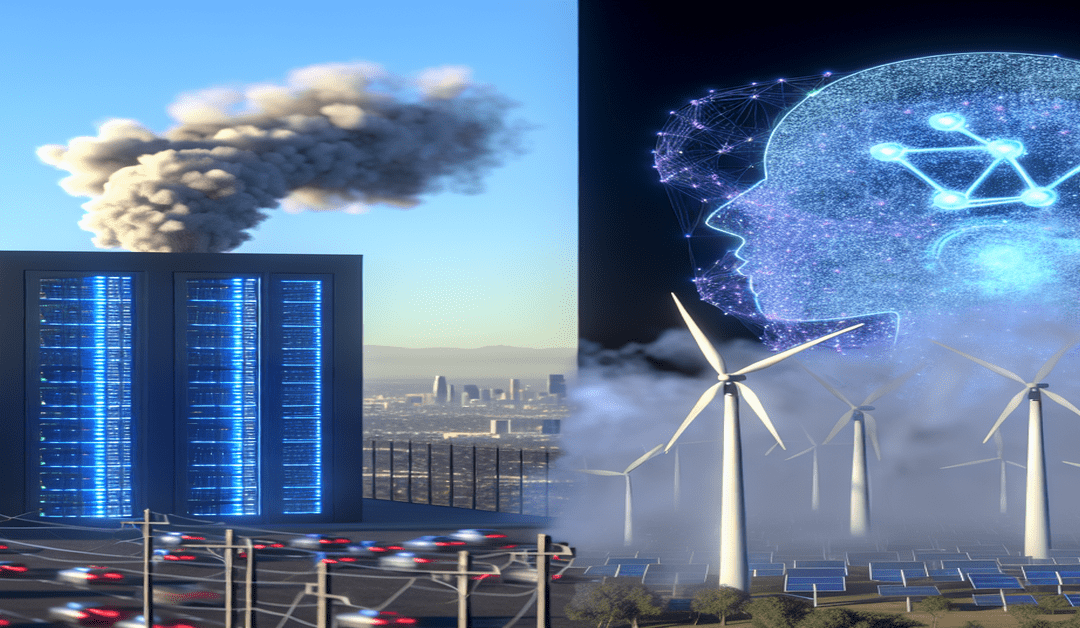The Hidden Environmental Cost of Artificial Intelligence: Addressing the Air Pollution Crisis
As artificial intelligence (AI) continues to revolutionize industries and transform our daily lives, it’s easy to get caught up in the excitement of technological progress. However, beneath the surface of this rapidly advancing field lies a growing concern: the **environmental impact** of AI, particularly its contribution to air pollution.
The Energy-Intensive Nature of AI
At the heart of the issue is the immense energy consumption required to power AI systems. Training large machine learning models demands a staggering amount of computational resources, which in turn relies heavily on electricity generated by fossil fuels. This dependency on non-renewable energy sources directly contributes to greenhouse gas emissions and air pollution.
To put the scale of the problem into perspective, recent studies suggest that the carbon footprint from training AI models could surpass the total emissions from all cars in California within just five years. This alarming comparison underscores the urgent need to address the **sustainability challenges** posed by AI development.
Data Centers: The Powerhouses Behind AI
Much of the energy consumption associated with AI can be traced back to the data centers and cloud computing services that host these models. These facilities are essentially the backbone of the AI industry, housing the servers and infrastructure necessary to support the computation-intensive tasks involved in machine learning.
However, the operation of these data centers comes at a significant environmental cost. They require massive amounts of power not only to run the servers but also to cool the systems and maintain optimal conditions. The resulting energy demand contributes to the burning of fossil fuels and the release of harmful pollutants into the atmosphere.
The Sustainability Paradox
The rapid growth of AI adoption across various sectors presents a paradoxical situation. On one hand, AI has the potential to drive innovation, improve efficiency, and solve complex problems. On the other hand, the increasing reliance on AI is exacerbating the **environmental footprint** of the technology industry.
As businesses and organizations embrace AI to gain a competitive edge, the demand for computational resources continues to soar. This, in turn, leads to the expansion of data centers and the consumption of more energy, further compounding the air pollution problem.
The Path to Greener AI
Addressing the environmental impact of AI requires a multi-faceted approach. One crucial step is to prioritize the transition to **renewable energy sources** in powering data centers and AI operations. By shifting away from fossil fuels and embracing clean energy alternatives like solar, wind, and hydropower, we can significantly reduce the carbon footprint of AI.
Additionally, there is a pressing need for the development of more **energy-efficient algorithms** and hardware. Researchers and engineers must focus on creating AI models that can achieve the same level of performance while consuming less energy. This includes exploring techniques such as model compression, quantization, and hardware acceleration.
A Call to Action
The environmental impact of AI on air pollution is a critical issue that demands immediate attention from both the technology industry and policymakers. It is crucial that we recognize the hidden costs of our technological progress and take proactive steps to mitigate its negative consequences.
As individuals, we can contribute by raising awareness about the issue, supporting organizations that prioritize sustainability in AI development, and advocating for policies that incentivize the adoption of clean energy in the technology sector.
Furthermore, businesses and organizations that leverage AI must take responsibility for their environmental footprint. This involves investing in renewable energy, implementing energy-efficient practices, and collaborating with experts to develop sustainable AI solutions.
Conclusion
The potential of AI to revolutionize our world is immense, but so is its impact on the environment. As we continue to push the boundaries of what is possible with AI, we must not lose sight of the urgent need to address its contribution to air pollution and climate change.
By working together to develop greener AI solutions, we can harness the power of this transformative technology while safeguarding the health of our planet for future generations. The path to a sustainable AI future is challenging, but it is a journey we must embark upon if we hope to create a better, cleaner world for all.
#ArtificialIntelligence #Sustainability #AirPollution #GreenTech #CleanEnergy
-> Original article and inspiration provided by Ryan Erik King
-> Connect with one of our AI Strategists today at Opahl Technologies

